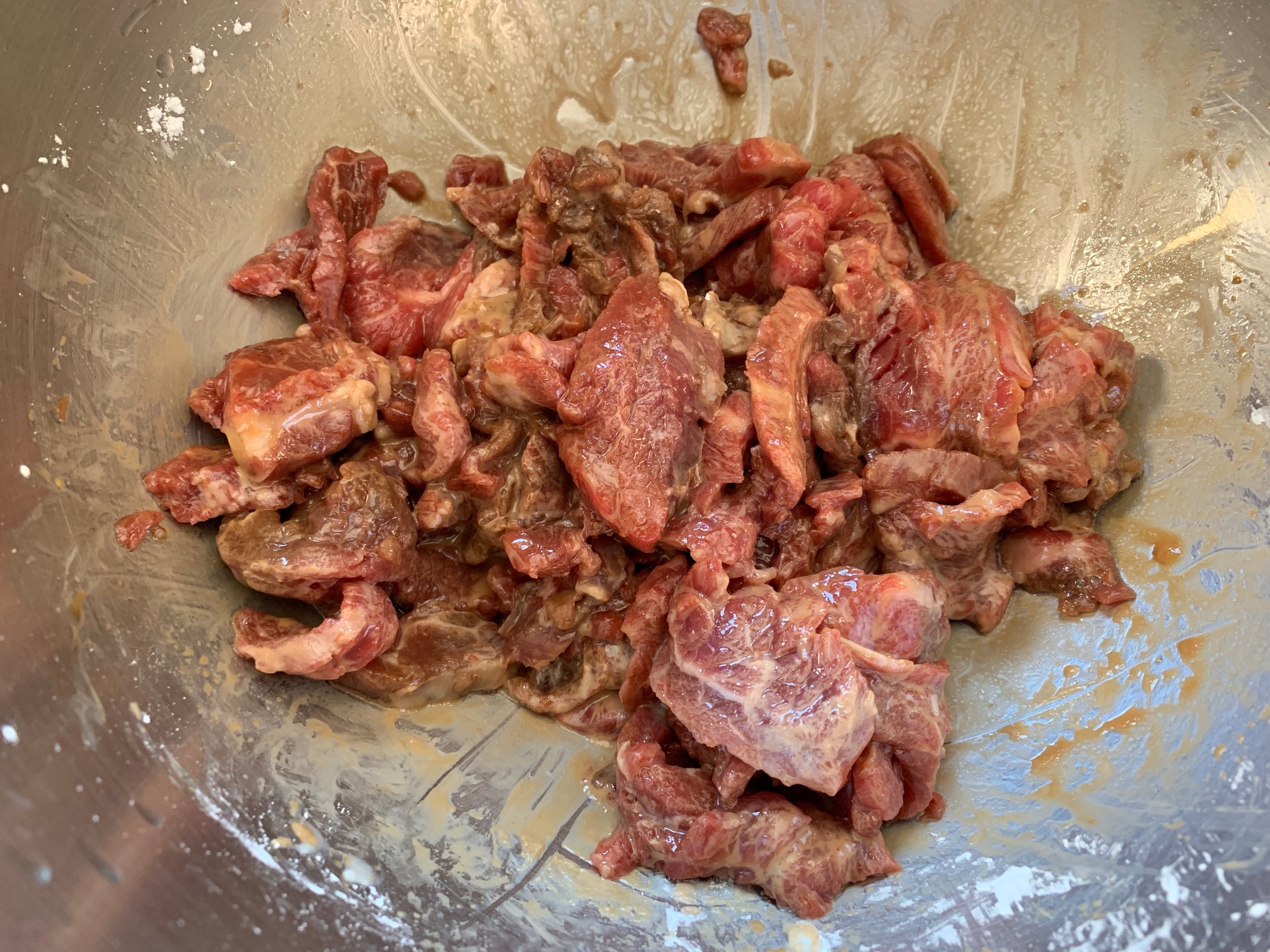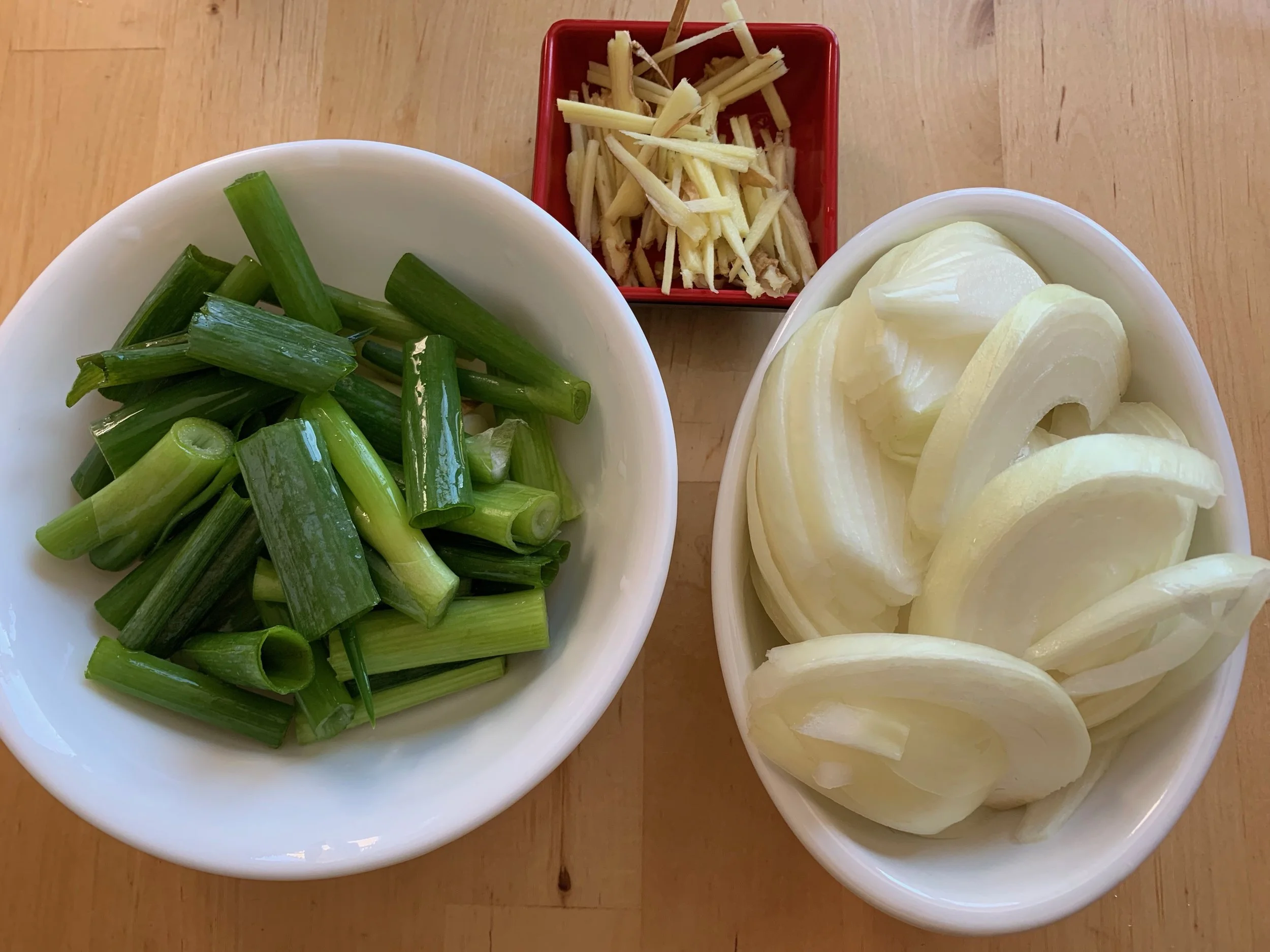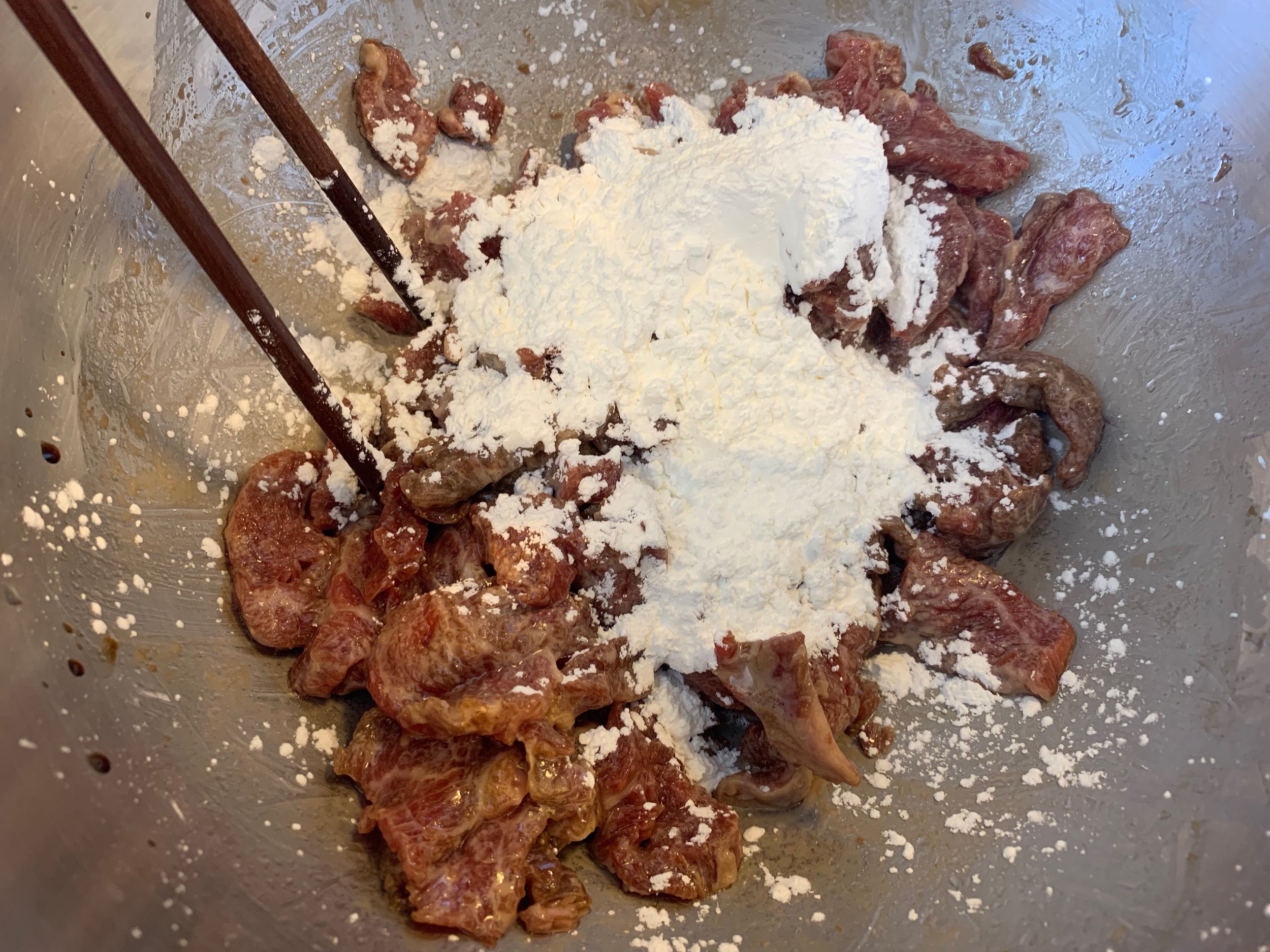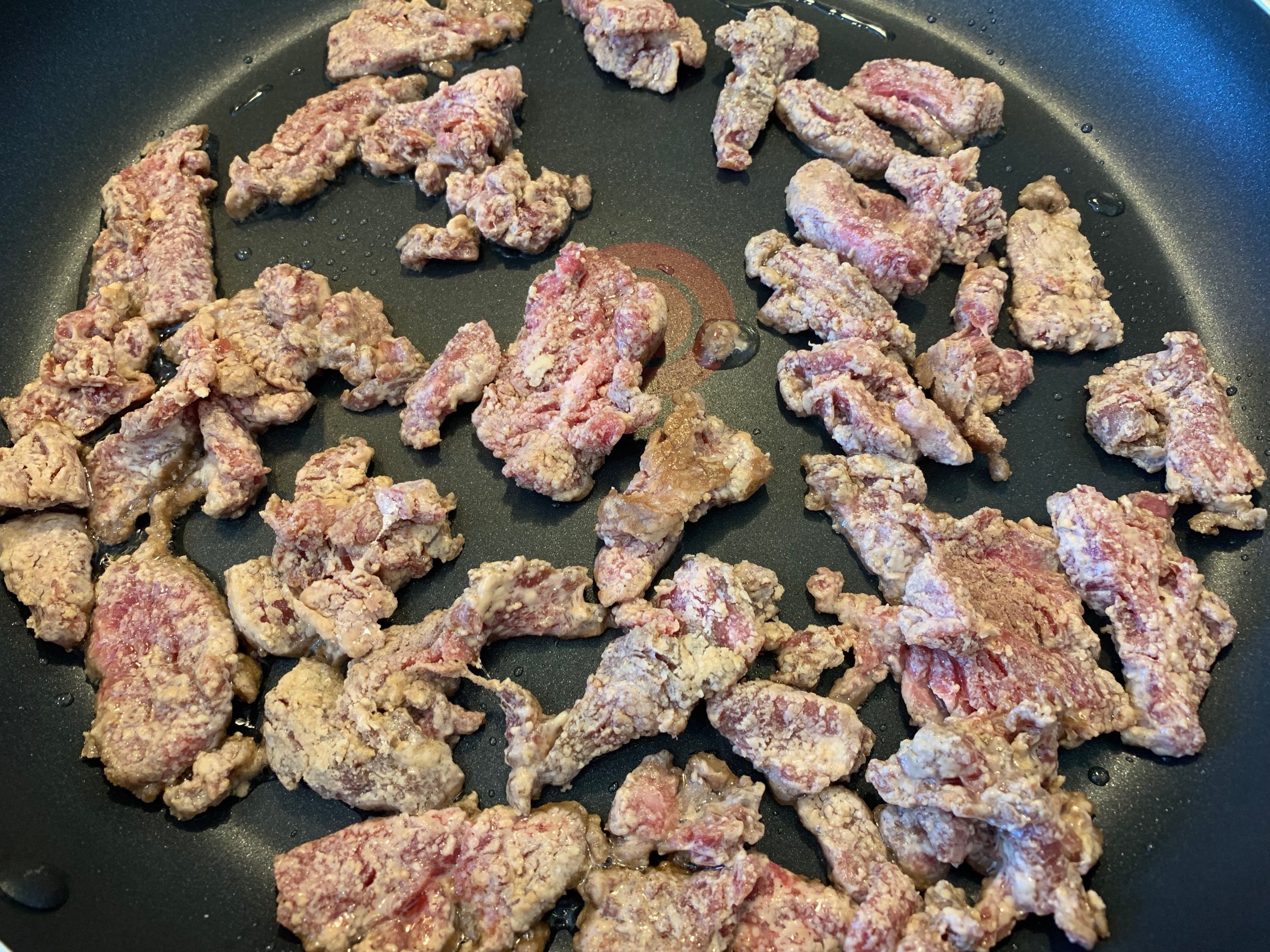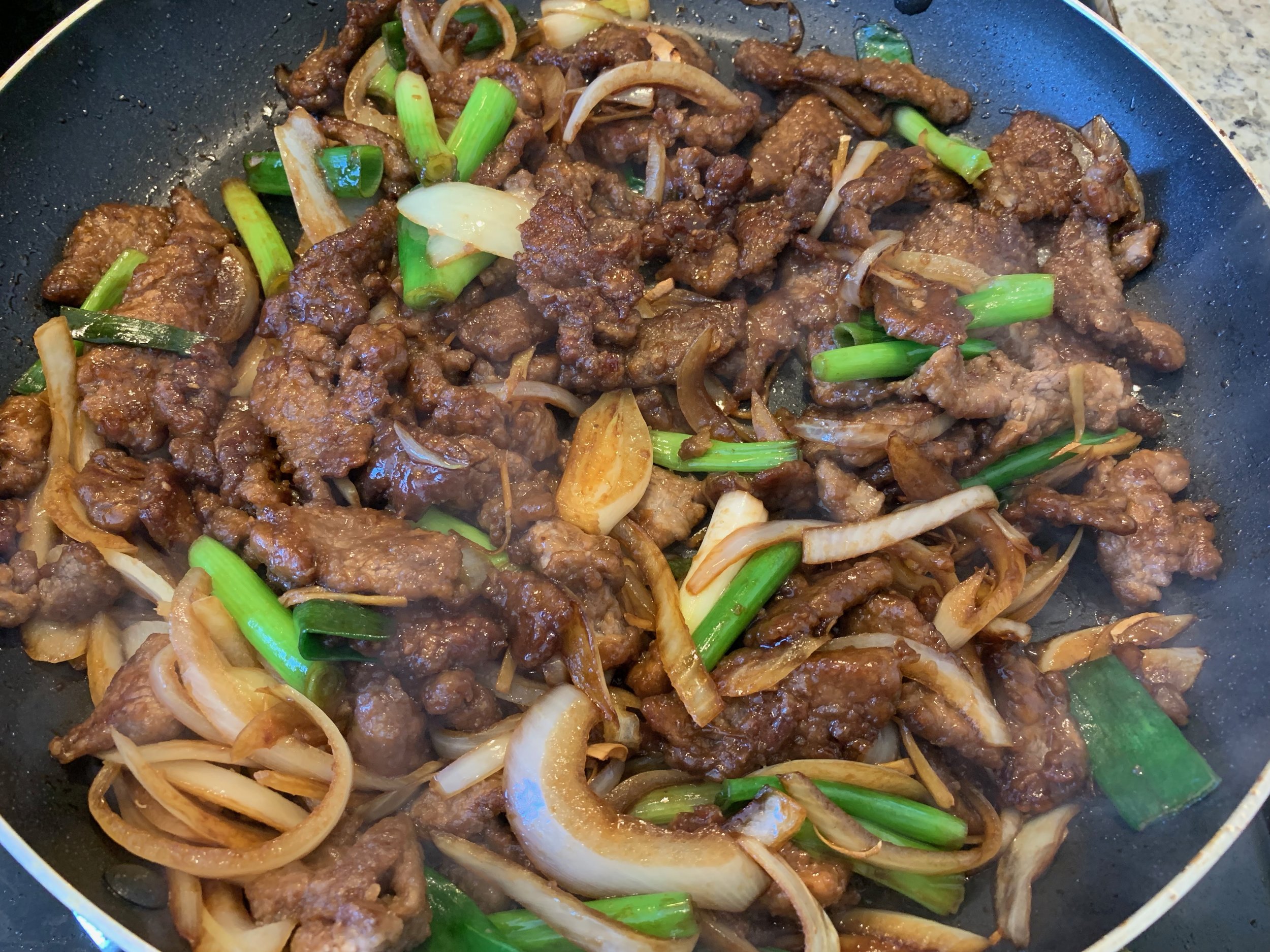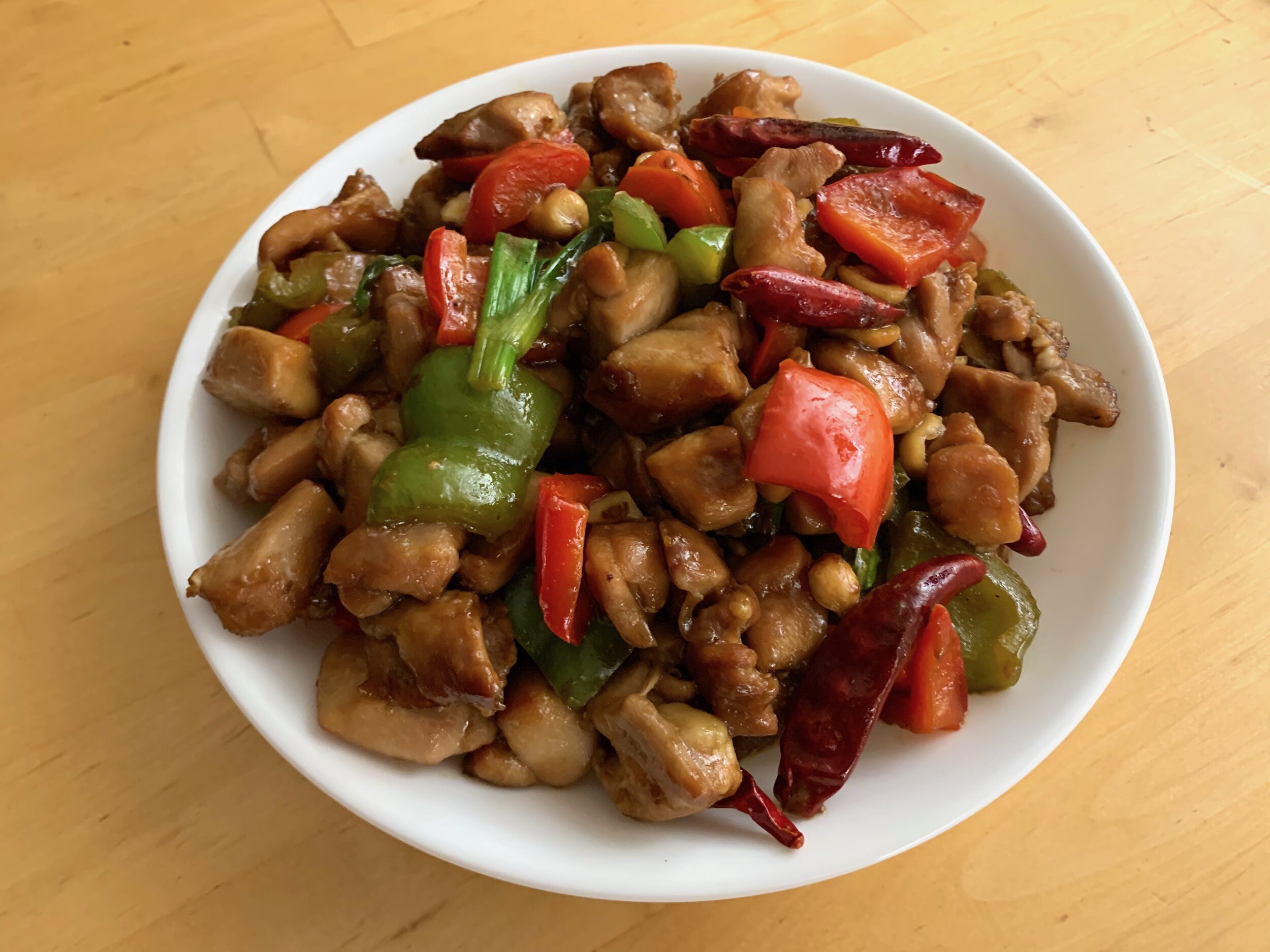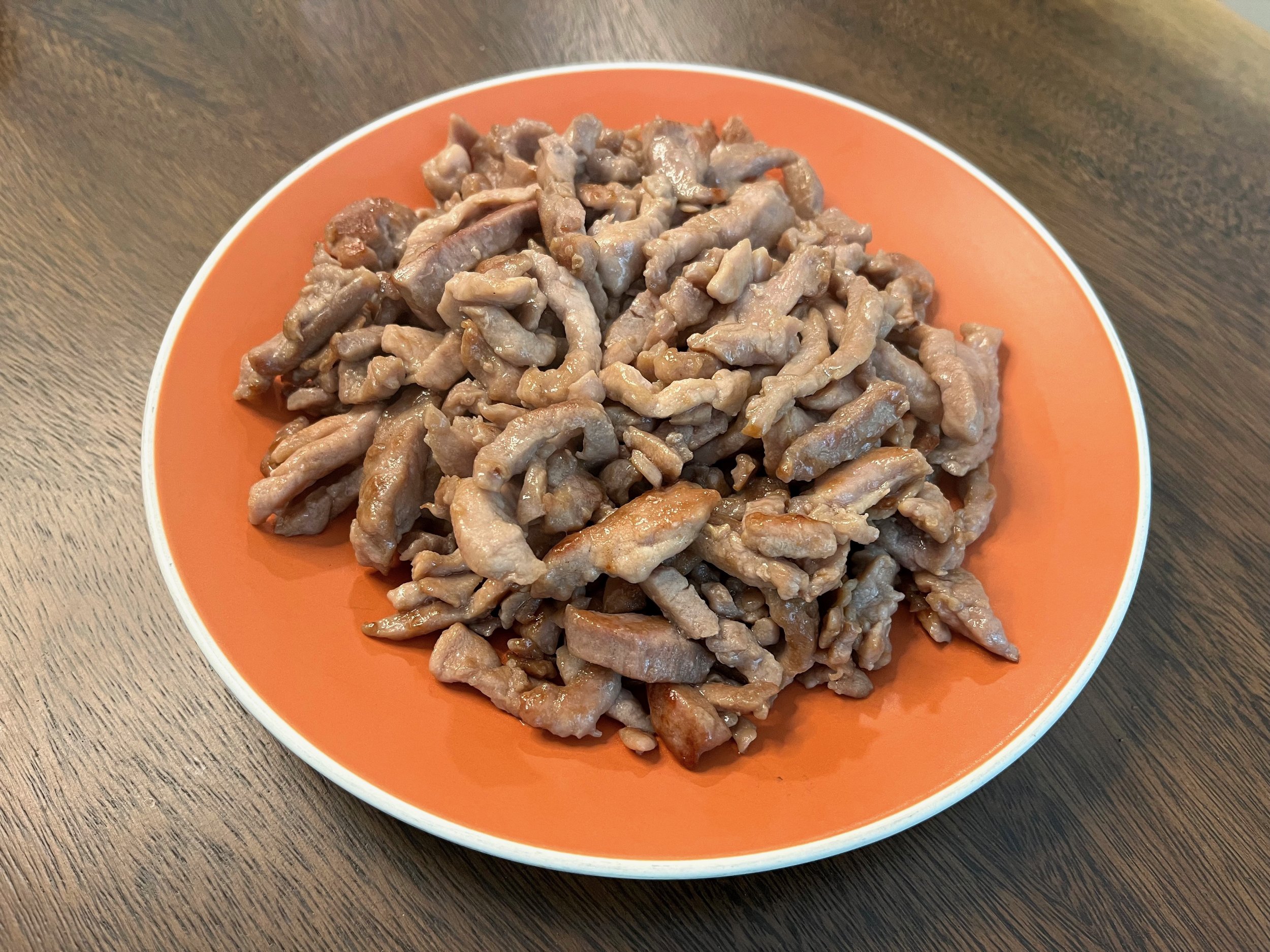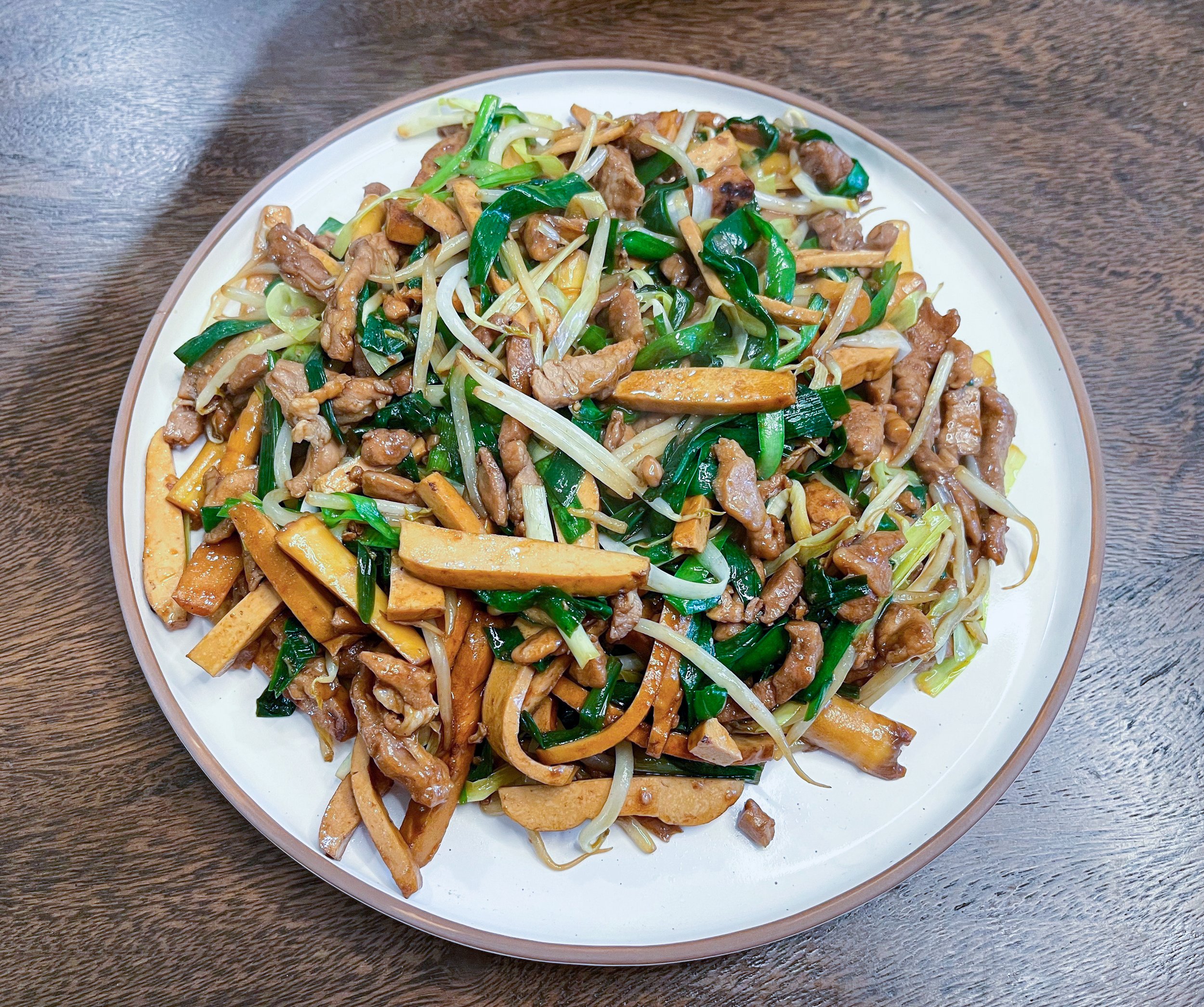Beef with Scallion and Onion

葱爆牛肉 (Cong Bao Niu Rou)
Beef with scallion and onion is a stir-fried dish popular in both Chinese-American and Chinese-Australian restaurants [1]. It consists of tender pieces of thinly sliced beef, cooked hot and fast with vegetables and a savory sauce, and is a straightforward dish to make at home.
Ingredients
1 lb flank steak, thinly sliced
3 tbsp cornstarch
½ tsp white pepper
1 tbsp vegetable oil
1 inch ginger, julienned
6 scallions, chopped
1 onion, thinly sliced
1 tbsp dark soy sauce
2 tsp soy sauce
1 tbsp Shaoxing rice wine (optional)
2 tsp brown sugar
Begin by slicing the beef. Flank steak is a cut commonly used for stir-frying, as it is lean and flavorful, as well as being relatively cheap. However, the long muscle fibers make it a relatively tough piece of meat [2]. Fortunately for us, the fibers run parallel through the entire cut, so we can solve the toughness problem by slicing thinly against the grain, giving us short muscle fibers in each piece of meat. Identify the direction in which the muscle fibers are going, and slice perpendicular to this direction. Both the thickness and direction of the slices are critical—meat cut too thick or at the wrong angle will result in a chewy and unpleasant texture. We want pieces which are about 2 inches long and 1/8-1/4 inch thick. If you find it difficult to cut this thinly, it can be helpful to put the meat in the freezer for an hour or so—not long enough to actually freeze, but enough for the meat to firm up.
Put the sliced beef in a large bowl, and prepare a quick marinade by adding 1 teaspoon of soy sauce, 1 tablespoon of oil, white pepper, and about a tablespoon of cornstarch. Mix well, and set the beef aside to marinate for 20-30 minutes at room temperature.
While the meat is marinating, we can use the time to prepare the other ingredients. Julienne the ginger, cutting it into thin matchsticks. Slice the onions thinly, to about ¼ inch thickness, and chop the scallions into 1-2 inch pieces.
When the meat is ready to cook, heat a tablespoon of oil in a skillet over high heat. While the oil is heating, mix the beef with about 2 tablespoons of cornstarch. This final light coat of starch helps the beef crisp in the pan, and also absorbs any moisture the meat might release. If you prefer a less crisp texture, then reduce the amount of cornstarch used in this step to 2 teaspoons. Fry the beef in the skillet for 30 seconds to a minute per side, being sure not to crowd the skillet. It is important to work quickly when searing the meat, to avoid overcooking it. Work in batches if necessary, removing the cooked beef to a holding plate.
Add the julienned ginger to the empty skillet and fry for about 30 seconds, until fragrant. Then add the onion and scallions to the pan, and continue to fry for about 2 minutes, stirring occasionally. We want the onions to take on some color, and soften slightly.
Then add the brown sugar, dark soy sauce, a teaspoon of regular soy sauce, and rice wine to the skillet. Stir to dissolve the sugar, and bring the sauce to a simmer. Add the cooked beef back to the pan and toss to coat. Stir for 1 minute until well mixed, and the beef is coated in the sauce. Remove from the heat, and serve with rice or noodles.
Substitutions
This dish is sometimes served with chilies, for a spicy kick. If you would like to prepare the dish in this way, add the desired number of dried chilies with the ginger when preparing the sauce. If you would like a saltier final product, increase the amount of regular soy sauce added to the sauce to 1 tablespoon.
Leeks work well in this dish as a substitute for the onions and scallions.
Other cuts of beef, such as sirloin and tenderloin, work well in this dish. However, steer clear of cuts with connective tissue, and be sure to slice against the grain.
[1] This dish is often called Mongolian Beef (蒙古牛肉) on menus in America, despite neither reflecting Mongolian cuisine, nor using Mongolian ingredients. Some historical evidence suggests that the dish was once known in some restaurants as “Peking Beef,” but in the 1950s, with China falling to communism and actively fighting the Americans in Korea, a dish named after the Chinese capital was no longer politically correct. Chinese-American restauranteurs renamed the dish for the neighboring country instead.
[2] Flank steak is cut from the abdominal muscles of the cow. In France, this cut is known as bavette, which translates to “bib.”
Recipe
Prep Time: 10 min Cook Time: 6 min Total Time: 36 min
(+20 min inactive)
Difficulty: 2/5
Heat Sources: 1 burner
Equipment: skillet
Servings: 6
Ingredients
For the Beef
1 lb flank steak, thinly sliced
1 tsp soy sauce
3 tbsp cornstarch
½ tsp white pepper
1 tbsp vegetable oil
For the Stir-Fry
1 inch ginger, julienned
6 scallions, chopped
1 onion, thinly sliced
For the Sauce
1 tbsp dark soy sauce
1 tsp soy sauce
1 tbsp Shaoxing rice wine (optional)
2 tsp brown sugar
Instructions
1. Slice the flank steak against the grain into thin slices, about 1/8-1/4 inch thick.
2. Mix the beef with 1 tsp soy sauce, 1 tbsp vegetable oil, white pepper, and 1 tbsp cornstarch. Set aside to marinate at room temperature for 20-30 minutes.
3. While the meat marinates, julienne the ginger, slice the onions to ¼ inch thickness, and chop the scallions into 1-2 inch pieces.
4. Heat about a tablespoon of oil in a skillet over high heat. Mix the marinated beef with 2 tablespoons of cornstarch, giving it a final coating. Fry the beef in a single layer in the pan for 30 seconds to 1 minute per side. Work in batches if necessary, removing the cooked beef to a holding plate.
5. Add the ginger to the skillet and fry until fragrant, about 30 seconds.
6. Add the onion and scallions to the pan, and fry, stirring occasionally, for 2 minutes, until the onions just start to soften.
7. Add the sugar to the pan, followed by the dark soy sauce, a teaspoon of regular soy sauce, and the rice wine. Bring the sauce to a simmer.
8. Add the beef back to the pan, and toss to coat for 1 minute. Serve with rice or noodles.

